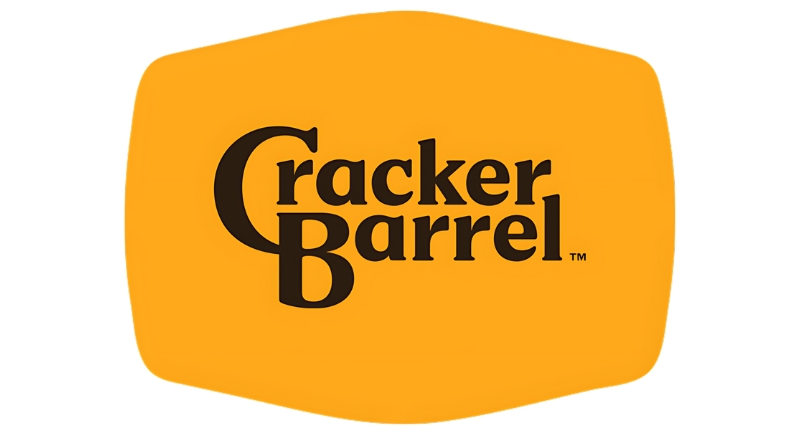Why the New Cracker Barrel Logo Has So Many People Furious
Cracker Barrel is baked into American road trips. For nearly half a century, it had the same look, too: a farmer in overalls leaning on a barrel. Now, the company has rolled out a redesign, and the reaction has been anything but calm.
The change is part of a campaign called “All the More,” meant to refresh the chain for a new era. But when you strip a brand of its most recognizable face, people tend to notice. Cracker Barrel’s new logo has ditched “Uncle Herschel,” the old-timer with a chair and barrel, and replaced him with a sleeker, text-forward design featuring only a subtle barrel outline. Fans online were quick to call it bland, some insisting it looks more like a bean or an app icon than the image that sat on restaurants for decades.
Why It Happened
The company hasn’t been shy about why it made the switch. Sales have been sliding: customer traffic was down 4 percent in 2024, and retail sales were down nearly 4 percent again in 2025. Executives say the goal is to simplify, modernize, and make the brand easier to recognize across digital platforms.
CEO Julie Felss Masino explained on Good Morning America that the company “needs to feel like the Cracker Barrel for today and for tomorrow,” while stressing that its core values and hospitality aren’t going anywhere. Interestingly, this is not the first time Cracker Barrel has gone text-only.
When it opened in 1969, the original logo didn’t feature Uncle Herschel either. He was added in 1977 as part of an intentional push to lean into nostalgia. This new version, the fifth evolution of the brand’s look, brings things full circle by going back to a stripped-down emblem.
The Backlash
The redesign landed in the middle of the internet culture war, and Cracker Barrel was suddenly being accused of going “woke.” Social media is filled with outrage posts, memes, and sarcastic takes about the company ditching tradition. Politicians even chimed in. Some compared the change to other brand controversies, like Bud Light or Target, framing it as part of a bigger cultural shift.
Others, though, simply poked fun at how seriously people were taking it. Users mocked the outrage as performative, pointing out that bigger issues exist than the outline of a barrel on a restaurant sign.
Meanwhile, a former longtime employee turned brand designer called the rebrand “brand suicide,” warning that Cracker Barrel had broken one of the big rules of branding: don’t toss away the imagery that made people feel connected to you in the first place.
Dollars and Nostalgia
The financial markets also joined the reaction. Shares of Cracker Barrel dropped more than 12 percent in the days after the new logo was revealed, erasing around $90 to $100 million in market value. That slide raised questions about whether the new identity would hurt business. But early numbers suggest a more mixed picture.
In its third-quarter 2025 report, revenue rose slightly by 0.5 percent, and the company posted a net income of $12.6 million compared to a $9.2 million loss in the same quarter the year before. That bump doesn’t necessarily prove the logo change is working, but it shows that the company’s finances aren’t in free fall despite the uproar.
The removal of Uncle Herschel hit harder than a font change usually would because he represented the brand’s whole atmosphere. When stores themselves are also being redecorated into “modern farmhouse” style with cleaner walls and less clutter, the fear for regulars is that the heart of the experience is slipping away.
So, Was It Worth It?

Image via Wikimedia Commons/Cracker Barrel
The new logo is only a few weeks old, and the debate isn’t going away. As history has shown with other corporate rebrands, logos are never “just a logo.” They carry meaning, memories, and in this case, a very specific idea of comfort. For now, the barrel has been rolled out of sight, and Cracker Barrel is betting that a sleeker future will keep the chain alive. Whether customers buy into it is another story, but if nothing else, the uproar proves that people really do care about branding details even if they never really come up in conversation.